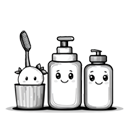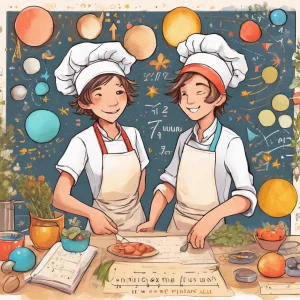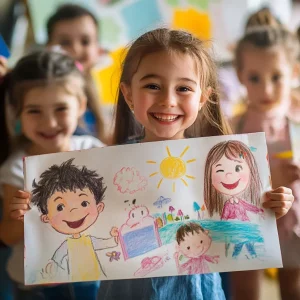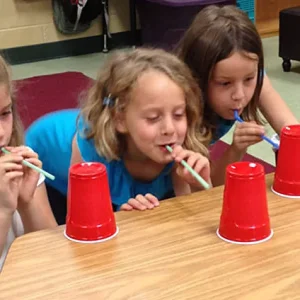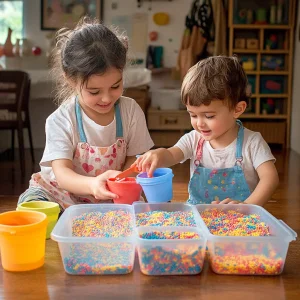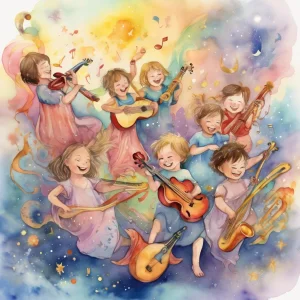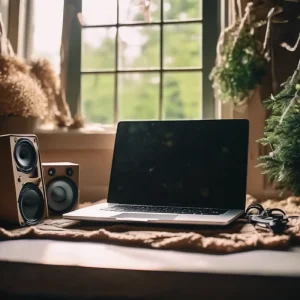Activity
Similar Activities
Cosmic Conundrum Chefs: Space Word Problem Adventure
Children’s Age: 7–8 years
Activity Duration: 10 – 20 minutes
Let's play Space Word Problem Chefs! We'll use paper, pencils, and space-themed stickers to explore language and problem-solving. Set up a cozy spot, grab your supplies, and get re…
Activity Duration: 10 – 20 minutes
Magical Storytelling: Create Together with Friends
Children’s Age: 4–6 years
Activity Duration: 15 – 30 minutes
In the Create a Story Together activity, children will explore their creativity, language skills, and teamwork. Get small pieces of paper, colored pencils, and a container ready. K…
Activity Duration: 15 – 30 minutes
Sensory Ball Play: Texture Discovery for Infants
Children’s Age: 3 – 6 months
Activity Duration: 5 minutes
Explore sensory play with textured balls designed for infants aged 3 to 6 months to enhance their sensory, social-emotional, motor, and language skills. Set up a cozy space with so…
Activity Duration: 5 minutes
Whispers of the World: Around the World Virtual Adventure
Children’s Age: 7–9 years
Activity Duration: 20 – 30 minutes
Embark on the "Around the World Virtual Adventure," a captivating and educational journey for children to explore various cultures and innovations globally. Through this activity, …
Activity Duration: 20 – 30 minutes
Whimsical Puzzle Race Challenge: A Playful Adventure
Children’s Age: 4–8 years
Activity Duration: 15 minutes
The Puzzle Race Challenge activity is designed to boost play skills, self-care skills, logical thinking, and problem-solving in children aged 4 to 8. Gather age-appropriate puzzles…
Activity Duration: 15 minutes
Space Adventure Obstacle Course: Galactic Learning Journey
Children’s Age: 6–12 years
Activity Duration: 25 minutes
Get ready for an awesome adventure with the Space Adventure Obstacle Course! You'll crawl through cardboard box spaceships, jump over paper tube asteroids, and follow colorful tape…
Activity Duration: 25 minutes
Sensory Texture Hunt for Developing Skills
Children’s Age: 4–7 years
Activity Duration: 5 – 10 minutes
Let's go on a Sensory Treasure Hunt! We will explore different textures like smooth stones, soft feathers, and rough sandpaper. You can use blindfolds for an extra challenge if you…
Activity Duration: 5 – 10 minutes
Whimsical Cup Blow Race for Kids
Children’s Age: 4–6 years
Activity Duration: 5 – 10 minutes
The Cup Race Challenge activity is designed to boost teamwork, fine motor skills, and problem-solving in children. You'll need plastic cups, straws, a table, and masking tape to cr…
Activity Duration: 5 – 10 minutes
Rainbow Rice Sensory Play Adventure
Children’s Age: 1.5–2 years
Activity Duration: 10 minutes
Engage toddlers aged 18 to 24 months in a sensory play activity using colored rice to enhance physical, social-emotional, and sensory development. Gather materials like uncooked wh…
Activity Duration: 10 minutes
Enchanted Musical Storytime Adventure: A Journey Through Sound
Children’s Age: 2–3 years
Activity Duration: 10 minutes
"Musical Storytime Adventure" is a delightful activity designed for children aged 24 to 36 months to enjoy a fun and educational experience. Set up by gathering picture books and c…
Activity Duration: 10 minutes



